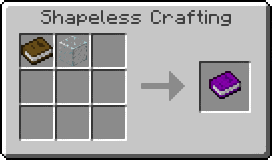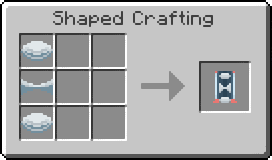-
Notifications
You must be signed in to change notification settings - Fork 94
First Steps in Minechem

To get started with Minechem, you'll need a Chemist's Journal and a Microscope.
The Chemist's Journal is the research log of Minechem. It records items viewed in the Microscope, which you'll need for viewing elements and molecules. Crafting a journal is simple, just combine a book with a piece of glass. The recipe is shapeless, so you can place the ingredients in any slot.
To craft a Microscope, you'll need 17 glass (for the lens assembly), 1 glass pane, and 5 iron ingots.

 You need two [convex lenses](https://raw.githubusercontent.com/iopleke/Minechem/gh-pages/includes/images/lens-convex.png) (place 5 glass in a + shaped pattern) and one [concave lens](https://raw.githubusercontent.com/iopleke/Minechem/gh-pages/includes/images/lens-concave.png) (place 7 glass in an H pattern).
Put the concave lens between the two convex lenses, and you'll have yourself a lens assembly.
You need two [convex lenses](https://raw.githubusercontent.com/iopleke/Minechem/gh-pages/includes/images/lens-convex.png) (place 5 glass in a + shaped pattern) and one [concave lens](https://raw.githubusercontent.com/iopleke/Minechem/gh-pages/includes/images/lens-concave.png) (place 7 glass in an H pattern).
Put the concave lens between the two convex lenses, and you'll have yourself a lens assembly.
Place the Microscope in the world and right click it to start using it. The tab on the right with a "?" provides info about how to use the Microscope.
You'll need to craft a Decomposer and a Chemical Synthesis Machine to start breaking down and reconstructing things. These machines need power to run (unless power requirements have been disabled in the config).
Once you're decomposing and synthesizing things, you'll want to build a Fission and Fusion reactor. The reactors also use power, and are used to split elements in half (Fission) and combine elements (Fusion). Building the reactors requires you to place a Projector with a blueprint in it, which will guide you through the reactor building process.
By splitting and merging elements, you can make almost anything. There is a config option to blacklist certain items or blocks (diamonds and emeralds are blacklisted by default), so if you're building a modpack or running a server, you have control over what can be synthesized or decomposed.
Additionally, Minechem has support for Minetweaker, so you can modify the decomposition or synthesis results, or even add new elements and compounds.